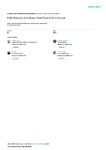Mostrar o rexistro simple do ítem
Effectiveness of indirect free kicks in elite soccer
| dc.contributor.author | Ardá Suárez, Antonio | |
| dc.contributor.author | Maneiro, Rubén | |
| dc.contributor.author | Casal Sanjurjo, Claudio Alberto | |
| dc.contributor.author | Losada, José Luis | |
| dc.contributor.author | Rial-Boubeta, Antonio | |
| dc.date.accessioned | 2024-02-19T14:01:30Z | |
| dc.date.available | 2024-02-19T14:01:30Z | |
| dc.date.issued | 2014 | |
| dc.identifier.citation | Casal, C. A., Maneiro, R., Arda, T., Losada, J. L., & Rial, A. (2014). Effectiveness of indirect free kicks in elite soccer. International Journal of Performance Analysis in Sport, 14(3), 744-760 | es_ES |
| dc.identifier.issn | 2474-8668 | |
| dc.identifier.issn | 1474-8185 | |
| dc.identifier.uri | http://hdl.handle.net/2183/35655 | |
| dc.description.abstract | [Resumen]. Los objetivos de este estudio fueron determinar la eficacia de los tiros libres indirectos, identificar las variables asociadas a un resultado exitoso y proponer un modelo para lanzar tiros libres con una mayor probabilidad de éxito. El análisis se centró en 783 tiros libres lanzados en 124 partidos de la Copa Mundial de la FIFA 2010, la fase final de la Liga de Campeones de la UEFA 2010/11 y la Eurocopa 2010. Se estudiaron las siguientes variables mediante análisis univariantes, bivariantes y multivariantes: momento del partido en el que se lanzó el tiro libre indirecto, posición y lateralidad del tiro, número de atacantes, número de defensas, contexto de interacción, entrega del balón, trayectoria del balón, tipo de marcaje, número de atacantes intervinientes, zona a la que se pasó el balón, zona de tiro, organización ofensiva, tipo de tiro y estado del partido. Los resultados muestran que se necesitan casi 36 tiros libres indirectos para marcar un gol, pero que el 64% de los goles de tiros libres indirectos tienen una influencia decisiva en el resultado del partido. Los goles fueron más frecuentes cuando el ataque se organizó de forma dinámica y tres o cuatro jugadores tocaron el balón antes de lanzarlo. Estos hallazgos podrían ayudar a los entrenadores a mejorar el rendimiento en los lanzamientos de falta. | es_ES |
| dc.description.abstract | [Abstract] The aims of this study were to determine the effectiveness of indirect free kicks, identify variables associated with a successful outcome, and propose a model for taking free kicks with an increased probability of success. The analysis focused on 783 free kicks taken in 124 matches at the 2010 FIFA World Cup, the final stages of the UEFA Champions League in 2010/11, and the 2010 UEFA Euro-pean Championships. The following variables were studied by univariate, biva-riate, and multivariate analyses: time of the match when the indirect free kick was taken, position and laterality of the kick, number of attackers, number of defenders, interaction context, delivery of ball, path of ball, type of marking, number of intervening attackers, area to which the ball was passed, shooting area, offensive organization, type of shot, and match status. The results show that almost 36 indirect free kicks are needed to score a goal, but that 64% of goals from indirect free kicks have a decisive influence on game outcome. Goals were more common when the attack was organized dynamically and three or four players touched the ball before a shot was taken. These findings could help coaches to improve free-kick performance. | es_ES |
| dc.description.sponsorship | Ministerio de Economía y Competitividad. DEP2012-32124 | es_ES |
| dc.language.iso | eng | es_ES |
| dc.rights | Atribución-NoComercial-SinDerivadas 3.0 España | es_ES |
| dc.rights.uri | http://creativecommons.org/licenses/by-nc-nd/3.0/es/ | * |
| dc.subject | Fútbol | es_ES |
| dc.subject | Análisis del rendimiento | es_ES |
| dc.subject | Regresión logística | es_ES |
| dc.subject | Soccer | es_ES |
| dc.subject | Performance analysis | es_ES |
| dc.subject | Logistic regression | es_ES |
| dc.title | Effectiveness of indirect free kicks in elite soccer | es_ES |
| dc.type | info:eu-repo/semantics/article | es_ES |
| dc.rights.access | info:eu-repo/semantics/openAccess | es_ES |
| UDC.journalTitle | International Journal of Performance Analysis in Sport | es_ES |
| UDC.volume | 14 | es_ES |
| UDC.issue | 3 | es_ES |
| UDC.startPage | 744 | es_ES |
| UDC.endPage | 760 | es_ES |
Ficheiros no ítem
Este ítem aparece na(s) seguinte(s) colección(s)
-
GI-PHG - Artigos [102]






